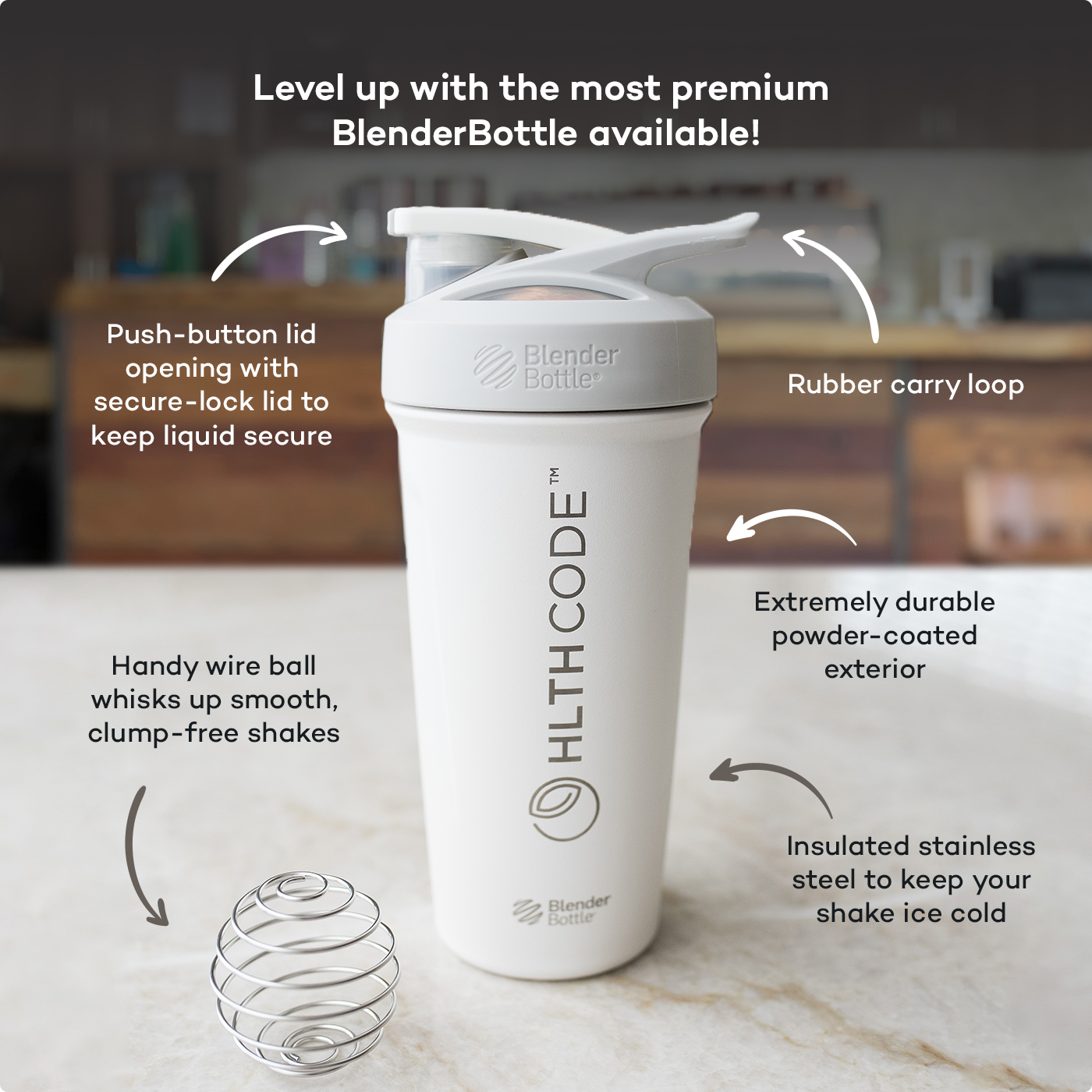Research Reveals: The Pre-Fast Meal That Enhances Fat Burning

Fasting has exploded in popularity for its benefits on metabolism, weight loss, and insulin sensitivity—but how you start your fast may be just as important as the fast itself. A new peer-reviewed study published in Nutrition & Metabolism explores this idea by asking a key question: does the macronutrient composition of your pre-fast meal affect how your body responds during the fast?
Turns out, the answer is a resounding “Yes”.
The researchers designed a study where participants completed two different 24-hour fasts. One fast was initiated with a HLTH Code shake, which is high in protein and healthy fats and low carbohydrates. The other fast was initiated with a popular breakfast shake, which is high in protein and carbohydrates, but low in fat. The shakes were matched for total calories, volume, and protein to ensure fairness of comparison. The goal was to understand how these two starting meals influenced blood sugar, insulin, ketones, and metabolic hormones during the fast.
Here’s what the bloodwork showed:
Reaching Ketosis
Participants who consumed the HLTH Code shake entered nutritional ketosis (≥ 0.5 mmol/L β-hydroxybutyrate) within 12 hours of fasting, and ketones remained steadily elevated through the 24-hour fast.
In contrast, those who consumed the other shake never reached ketosis at any time point in the 24-hour fast. This suggests that starting your fast with a carbohydrate-heavy meal may delay or blunt your body’s ability to switch into fat-burning mode.
Improved Insulin and Blood Sugar Control
Just one hour after consuming the shake:
- Insulin was about 42% lower in the HLTH Code shake condition compared to the Carnation shake condition.
- Blood glucose was measured with continuous glucose monitors and was found to be significantly lower in the HLTH Code condition during the early hours of fasting compared to the Carnation condition.
- Blood glucose remained very stable (fewer spikes and troughs) over the course of the fast when the fast was initiated with HLTH Code.
This drop in insulin is critical because high insulin levels can inhibit fat burning and prolong hunger. Lower insulin promotes metabolic flexibility—helping your body tap into fat stores sooner.
Elevated Glucagon and Appetite-Regulating Hormones
- Glucagon, the hormone that tells your body to release stored energy, was about 24% higher following the HLTH Code shake.
- Levels of GLP-1 and GIP—incretin hormones that help regulate insulin and appetite—were about 27% and 34% higher, respectively.
This suggests that starting a fast with HLTH Code doesn’t just improve your body’s ability to manage blood sugar—it also supports appetite control and potentially reduces the mental strain of fasting.
Why This Matters for Your Fasting Routine
Fasting can be tough—especially in the first 12 hours when blood sugar and insulin dip, and your body starts shifting from carbs to fat for fuel. Choosing a low-carb, high-fat pre-fast meal like HLTH Code can smooth that transition by:
- Encouraging a faster onset of fat-burning (ketosis),
- Reducing blood sugar swings,
- Lowering insulin spikes,
- Enhancing hunger-regulating hormones.
This could mean less hunger, more energy, and better metabolic benefits during your fast—without adding any extra complexity to your routine.
Starting your fast with a low-carb, high-fat shake like HLTH Code isn’t just convenient—it’s scientifically backed. This approach enhances insulin sensitivity, promotes fat oxidation, and supports better glycemic control across the entire fasting window.
If you’re fasting for health, longevity, or weight loss, the research suggests this small change can yield big results.
Read the full study here.
This article is for informational and educational purposes only. It is not, nor is it intended to be substitute for professional medical advice, diagnosis, or treatment and should never be relied upon for specific medical advice.


















